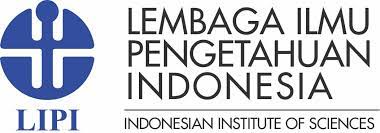ANALISIS BUKU AUTO DRILL NGOMONG ARAB KARYA JAMALUDDIN SHIDDIQ, M.Pd. DAN RIZKA ELIYANA MASLIHAH, M.Pd.I. (TINJAUAN KELAYAKAN ISI, BAHASA, DAN GRAFIKA)
DOI:
https://doi.org/10.53866/aljabiri.v2i1.543Keywords:
textbook/text, Arabic language, Graphic FeasibilityAbstract
This research aims to: 1) to determine the suitability of the Auto Drill Speak Arabic Book based on content, language and graphic assessment criteria. 2) to determine the advantages and disadvantages of the Auto Drill Speak Arabic Book. This research uses a qualitative research approach. Where the type of research is liberal research. Data collection techniques use documentary study methods and online data tracking. Then the data sources were obtained from primary data sources and secondary data sources (Arabic books, references related to textbooks, materials, graphic aspects, previous theses, articles, journals and internet sites). The analysis technique used is the content analysis technique, namely an in-depth discussion of the content.
The results of the research show that the material of this textbook meets the criteria for a good textbook. The size of the teaching materials used is in accordance with ISO in the field of textbook creation. The placement of book cover layout elements is in accordance with BSNP standards and the design of the book's contents includes a reflection of the contents. book, the harmony of the layout, typography of the book's contents, and illustrations of the contents are also appropriate. In the advantages of this book, researchers found several advantages, including that there are around 1,500 conversation items summarized into 29 theme categories. The conversations are divided into three major themes, namely daily situational conversations, popular expressions, and expressions for Hajj and Umrah. Miscellaneous Arabic cultural material is also presented to enrich insight and increase communication skills in Arabic. Each chapter is equipped with explanations of Arabic language rules. so that our logical patterns of Arabic are formed, not just memorizing. There are bonuses from e-books, videos, to applications for learning Arabic independently. There are bonuses from e-books, videos, to applications for learning. As for the shortcomings of the book, the researcher found several shortcomings, including that the book looks monotonous because each conversation theme is not accompanied by pictures, the conversations in the book are not colored, between the conversations between A and B, they are not colored, only black and white, the book is printed using opaque paper and colorless.
References
Cahyani, M., Sunarko, A., Mulyani, P. S., & Fatkhurrohman, F. (2023). Telaah Komprehensif Penyajian Materi Dan Teknik Evaluasi Buku Teks Bahasa Arab Kelas Viii Madrasah Tsanawiyah Kma Nomor 183 Terbitan Kemenag Tahun 2020. Lisanan Arabiya: Jurnal Pendidikan Bahasa Arab, 7(1), 1-17.
Departemen Pendidikan Nasional, 2006, Pedoman Memilih dan Menyusun Bahan Ajar,, Jakarta: Departemen Pendidikan Nasional.
Evinarosa, dkk, 2022, Metode Penelitian Kepustakaan (Library Research), Bandung: CV Media Sains Indonesia.
Hanafi, Abdul Halim dan Amrina, 2013, Desain Pembelajaran Bahasa Arab, Cet.I; Jakarta: Diadit Media.
Jasmadi, 2006, Kiat Menjadi Penulis Buku Profesional, Yogyakarta: C.V Andi Offset.
Maarif, M. Samsul, 2015, Perbandingan Kualitas Buku Teks Bahasa Arab Tingkat Madrasah Tsanawiyah, Jurnal Pendidikan Islam, 6, No.1.
Mascita, Dede Endang, 2021, Mendesain Bahan Ajar Cetak dan Digital, Bandung: Media Sains Indonesia.
Muna, Wa, 2011, Metodologi Pembelajaran Bahasa Arab, Cet.I; Yogyakarta: Teras.
Muslich, Mansur, 2010, Text Book Writing, Dasar-dasar Pemahaman, Penulisan dan Pemakaian Buku Teks, Yogyakarta: Ar-Ruzza Media.
Muslich, Mansur, 2010, Text Book Writing, Dasar-dasar Pemahaman, Penulisan dan Pemakaian Buku Teks, Yogyakarta: Ar-Ruzza Media.
Nuha, Ulin, 2012, Metodologi Super Efektif Pembelajaran Bahasa Arab, Cet.I; Jogjakarta: Diva Press.
Peraturan Menteri Agama (PMA) Republik Indonesia Nomor 9 tahun 2018 tentang Buku Pendidikan Agama,Pasal 1 ayat 2,
Shiddiq, Jamaluddin dan Rizka Eliyana Masluhah. 2023. Auto-Drill Ngomong Arab Sehari-Hari. Yogyakarta: Damigo Books.
Siswanto, Iwan, 2019, Upaya Meningkatkan Qowaid Bahasa Arab Melalui Model Pembelajaran Mind Map di Prodi Ekonomi Syariah,, Riau: Jurnal Al Muqayyad, Vol.1, No.1.
Sofyana, H. D., Fatkhurrohman, F., & Sunarko, A. (2023). KONSEP PENGEMBANGAN KURIKULUM DALAM PEMBELAJARAN BAHASA ARAB (Studi Komparasi antara Buku Karya Prof. Dr. Moh. Ainin dan Buku Karya Dr. Ahmad Muradi, M. Ag. & Dr. Taufiqurrahman, M. Alphateach (Jurnal Profesi Kependidikan dan Keguruan), 3(1).
Sukmadinata, Nana Syaodih, 2015, Metode Penelitian Pendidikan, Cet.X; Bandung: PT Remaja Rosdakarya.
Setiyanti, T. A. A., Sunarko, A., Al Kholifah, M. A. M., Falah, M. F., & Ali, A. H. (2023). Istihdamu Attoriiqotil Ittisoliyah fii Ta’liim Maharotil Kalam (Al Bahts Al Maktabi fi Kitab “Al Maharat Al Lughawiyah” li Duktur Rusdy Ahmad Tuaimah). AJIRSS: Asian Journal of Innovative Research in Social Science, 2(2), 97-113.
Wibowo, Mungin Eddy. 2005. Konseling Kelompok Perkembangan. Semarang: UNNES Press.
Downloads
Published
Issue
Section
License
Copyright (c) 2023 Asep Sunarko, Wirda Laila Cholizatul Muna , Luluk Alawiyah, Fahrur Rosikh

This work is licensed under a Creative Commons Attribution-ShareAlike 4.0 International License.

















